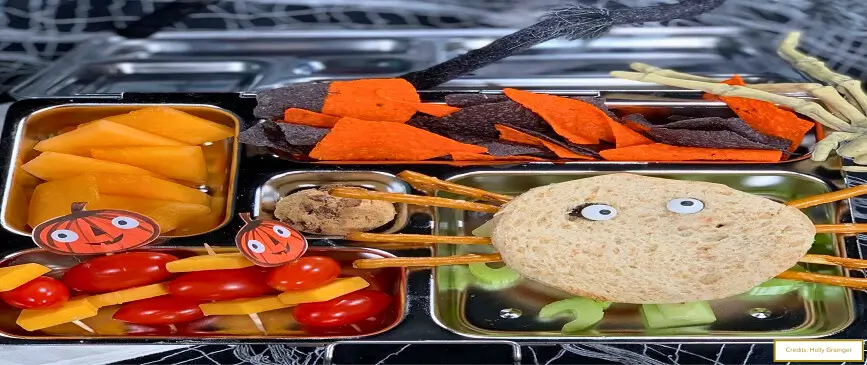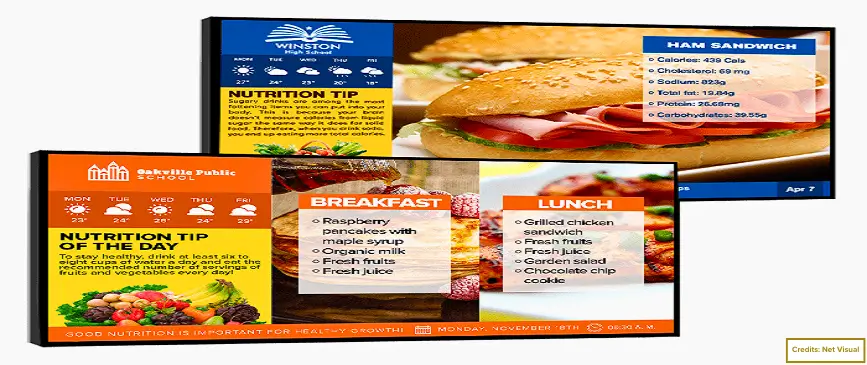Introduction
High school cafeterias hold a unique place in the academic and social fabric of student life. They’re where friendships are fostered, ideas are shared, and, of course, meals are served. But….
What’s Behind The Meals That Fuel A Student’s Day?
Never thought?
Learn Today!
Here ‘s a deep dive into the world of high school cafeteria food: what’s served, how it’s governed, and how it could be improved.
What’s Typically Served in High School Cafeterias?
High school cafeterias often offer a mix of comfort food and practical staples. Common entrees include:
- Pizza
- Hamburgers
- Chicken nuggets
- Spaghetti with marinara sauce.
For sides, students can expect options like:
- French fries
- Fresh fruit,
- Steamed vegetables.
Dessert might be a sweet treat like:
- Pudding
- Brownies
- Canned fruit.
And to wash it all down? Beverages like:
- Milk (in plain, chocolate, or strawberry flavors
- Water
- Fruit juices are typically on offer.
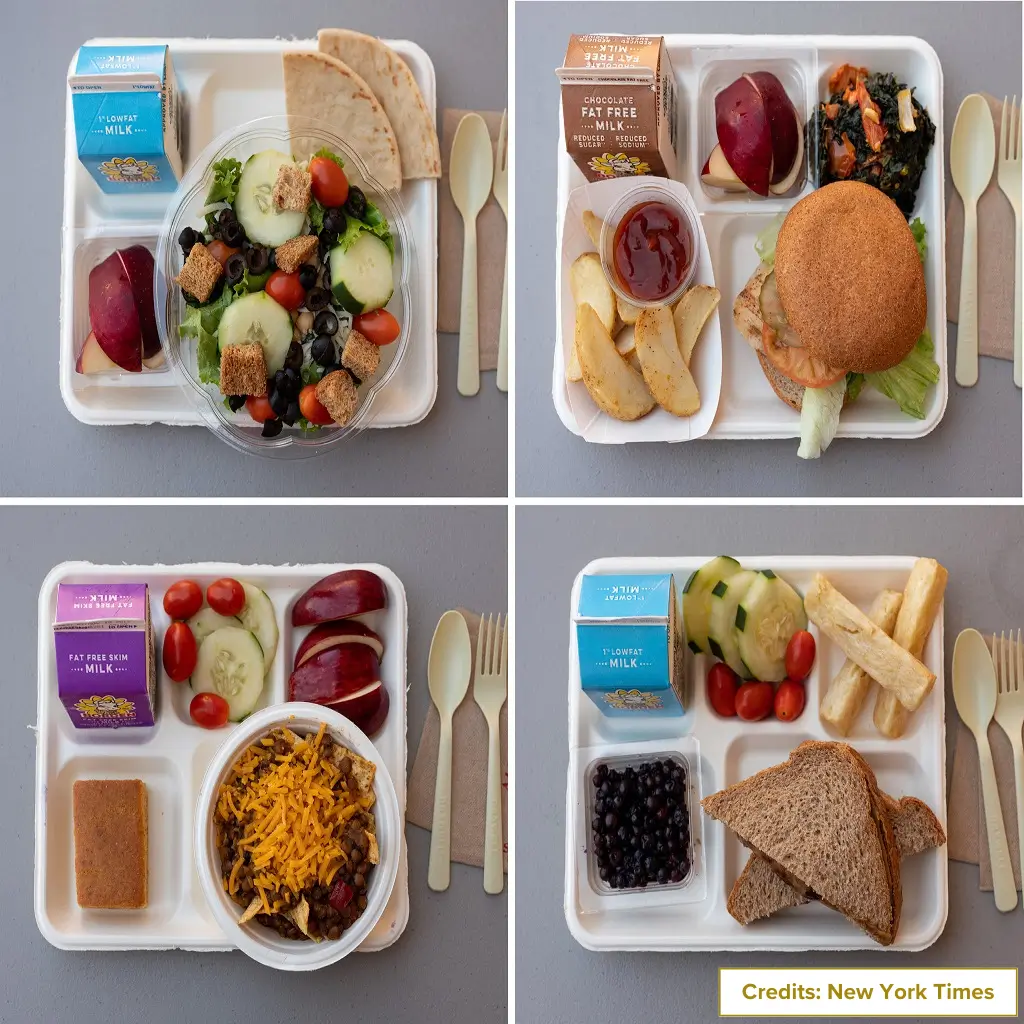
Yet the variety doesn’t stop there. Some schools go beyond lunch, offering breakfast and after-school snacks. Breakfast options often include cereals, toast, and different types of breakfast sandwiches, ensuring students start the day right.
While some students bring their own packed lunches or snacks, others indulge in additional offerings like chips or sodas in school even though sugary drinks are increasingly being phased out.
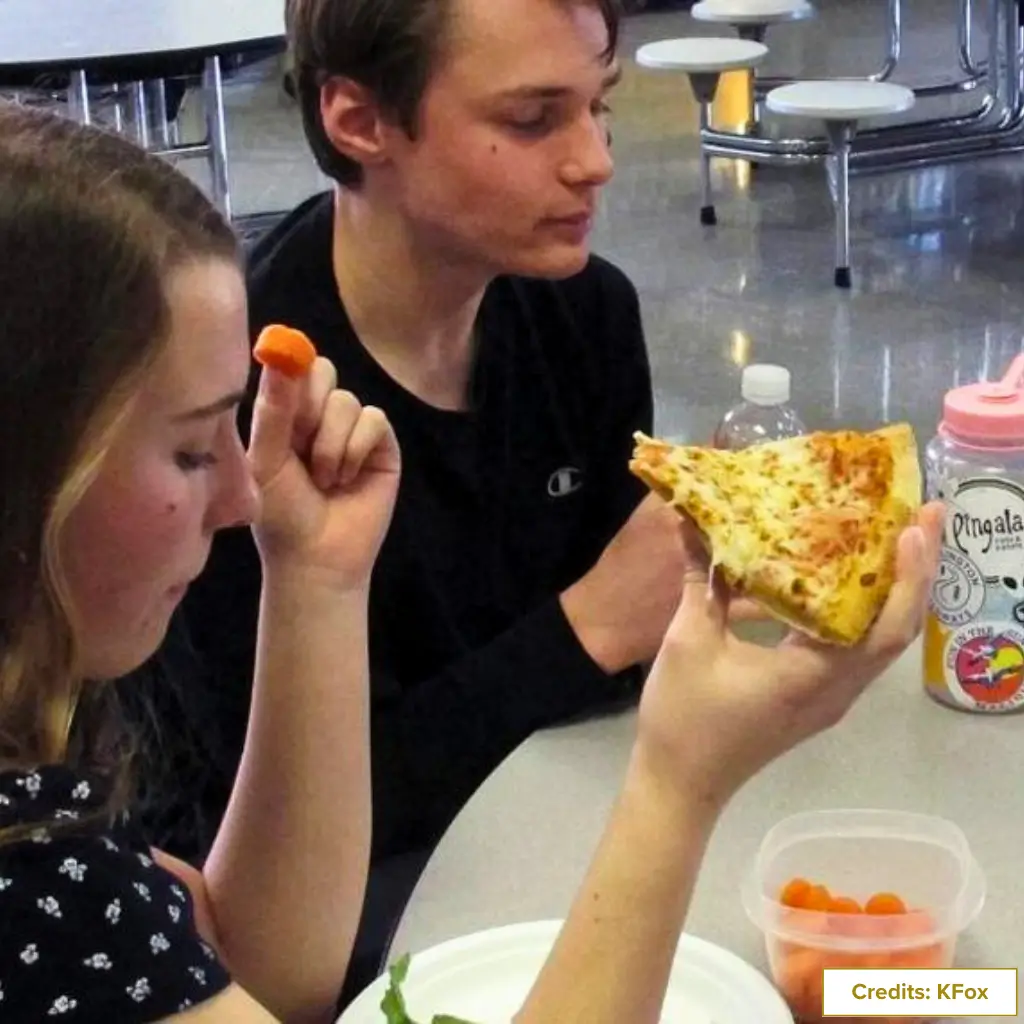
Despite the consistency in menus across schools, individual experiences vary widely. For instance, some students might fondly remember warm Philly-style pretzels on Pretzel Day, while others cringe at memories of bland canned peas or greasy fries. These differences often spark conversations about how to improve school cafeteria food for the better.
Benefits and Drawbacks of Common Cafeteria Foods
When it comes to high school cafeteria food, every plate has a story. Some foods shine as healthy and convenient options, while others raise eyebrows for their nutritional drawbacks. Here’s a closer look at what works and what doesn’t:
| Food Item | Benefits | Drawbacks |
| Pizza | A student favorite, providing carbs and protein for energy. | Often high in sodium and unhealthy fats, lacking in fiber or greens. |
| Vegetables | Packed with essential nutrients and fiber for digestion. | Often served overcooked or bland, making them less appealing to teens. |
| Fast Food Options | Convenient, affordable, and familiar. | Typically high in calories, sodium, and unhealthy fats. |
| Chicken Nuggets | Protein-rich and convenient | Often processed and high in unhealthy fats |
| Chocolate Milk | Encourages milk consumption, providing calcium and vitamin D. | High in added sugars, likened by some to sodas in school. |
| Desserts (e.g., Jello) | Provides a quick energy boost | High in sugar, low in essential nutrients |
| Fresh Fruit | A natural, sweet snack packed with vitamins and antioxidants. | Can spoil quickly or appear unappealing if not stored properly |
Therefore, with all this balancing the modern school cafeteria offerings required to consider both taste and nutrition which is no doubt a challenge that schools continuously strive to meet.
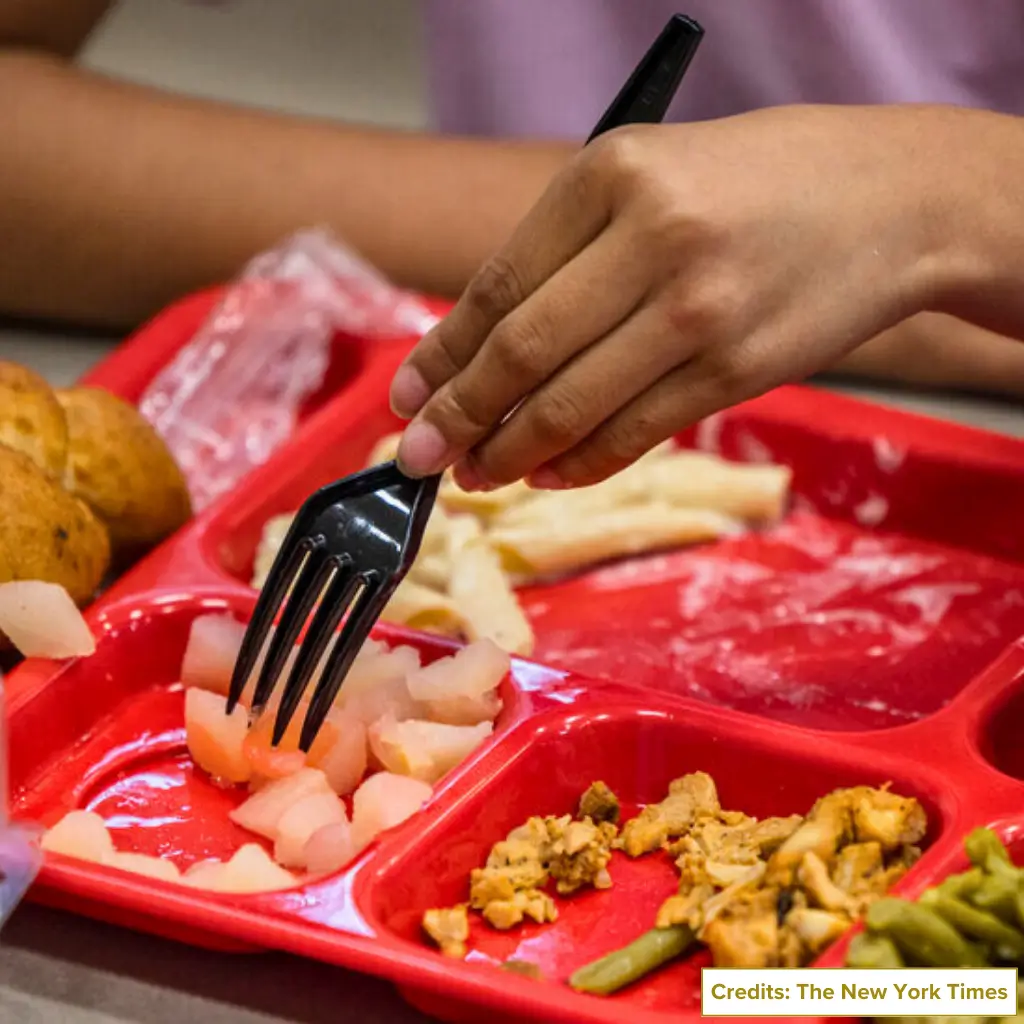
Laws and Regulations Governing High School Cafeteria Meals
Behind the scenes of every lunch tray are stringent laws and regulations aimed at ensuring students get nutritious and affordable meals. Let’s break down some key programs and policies:
- The National School Lunch Program (NSLP): Established in 1946, the NSLP provides federal funds to schools for reduced-price or free meals. Participating high schools must adhere to nutritional guidelines, offering meals that include fruits, vegetables, proteins, grains, and milk. One interesting feature is the “Offer vs. Serve” (OVS) policy, which allows students to choose from various food options to minimize food waste and encourage healthier eating habits.
- The School Breakfast Program (SBP): Like the NSLP, the SBP ensures students have access to balanced breakfasts. Meals under this program must meet USDA standards, including servings of fruits, grains, and milk. By offering breakfast, schools can help students stay energized and focused throughout the day.
- The Healthy, Hunger-Free Kids Act of 2010: This act raised the bar for school meals by requiring daily servings of fruits and vegetables, reducing sodium and fat, and emphasizing whole grains. By promoting age-appropriate portions the act aims to combat childhood obesity and foster long-term healthy eating habits.
- The School Food Authority (SFA): The SFA oversees compliance with federal nutritional guidelines and helps schools develop meal plans that meet USDA standards. This authority also collaborates with state agencies to manage special initiatives like summer meal programs.
- Permanent Free Meals for All: Starting in the 2023-2024 school year, high schools such as Massachusetts made meals free for all students participating in the NSLP. This landmark move ensures no student is left hungry, reducing stigma and enhancing focus on academics.
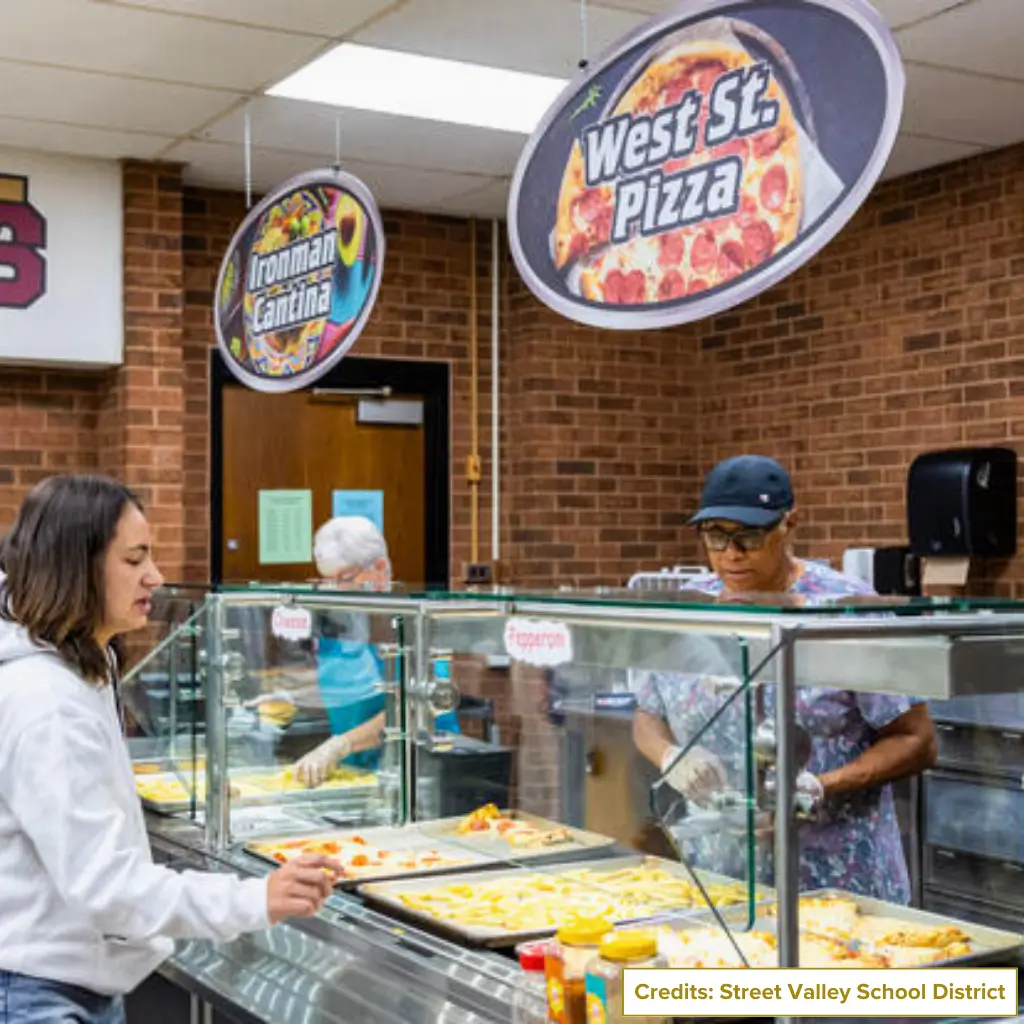
Strategies for Improving the Quality of High School Cafeteria Food
To better serve students here are some strategies to aid in the process:
- Switching Up Ingredients: Replace processed meats in chicken nuggets or hot dogs with leaner, nitrate-free options. Offer grilled or baked alternatives.
- Incorporating Fresh Produce: Expand salad bars and include locally sourced fruits and vegetables.
- Nutritional Education Empowering students to make informed decisions about their meals is key. This can be done by integrating nutritional education into the curriculum.
- Portion Control Reducing portion sizes for high-calorie items like fries while increasing servings of vegetables and fruits can make meals healthier without compromising variety.
- Revamping the Environment: Designing high school cafeterias with comfortable seating, modern lighting, and vibrant wall art and murals can make meal times more enjoyable. These visuals could feature healthy foods or active lifestyles.
- Expand Menu Options: Including diverse lunch menu options items like grilled fish, vegetable wraps, and whole grain pasta ensures there’s something for everyone. Introducing different types of breakfast options, such as smoothies or yogurt parfaits can also enhance the experience.
- Limit Fast Food Alternatives: While items like burgers and fries are tempting, smaller portions and healthier recipes can strike a balance between satisfaction and nutrition.
Healthy Menu Suggestions for High School Cafeterias
Building a balanced menu means thinking creatively about taste, variety, and nutrition. Here’s a table of suggestions for an improved cafeteria experience:
| Category | Menu Suggestions |
| Entrees | Grilled chicken wraps, veggie stir-fry with tofu, whole-grain pasta. |
| Sides | Quinoa salad, roasted sweet potatoes, fresh veggie sticks with hummus. |
| Desserts | Fresh fruit cups, yogurt parfaits, oatmeal cookies. |
| Beverages | Infused water, unsweetened iced tea, low-fat plain or flavored milk. |
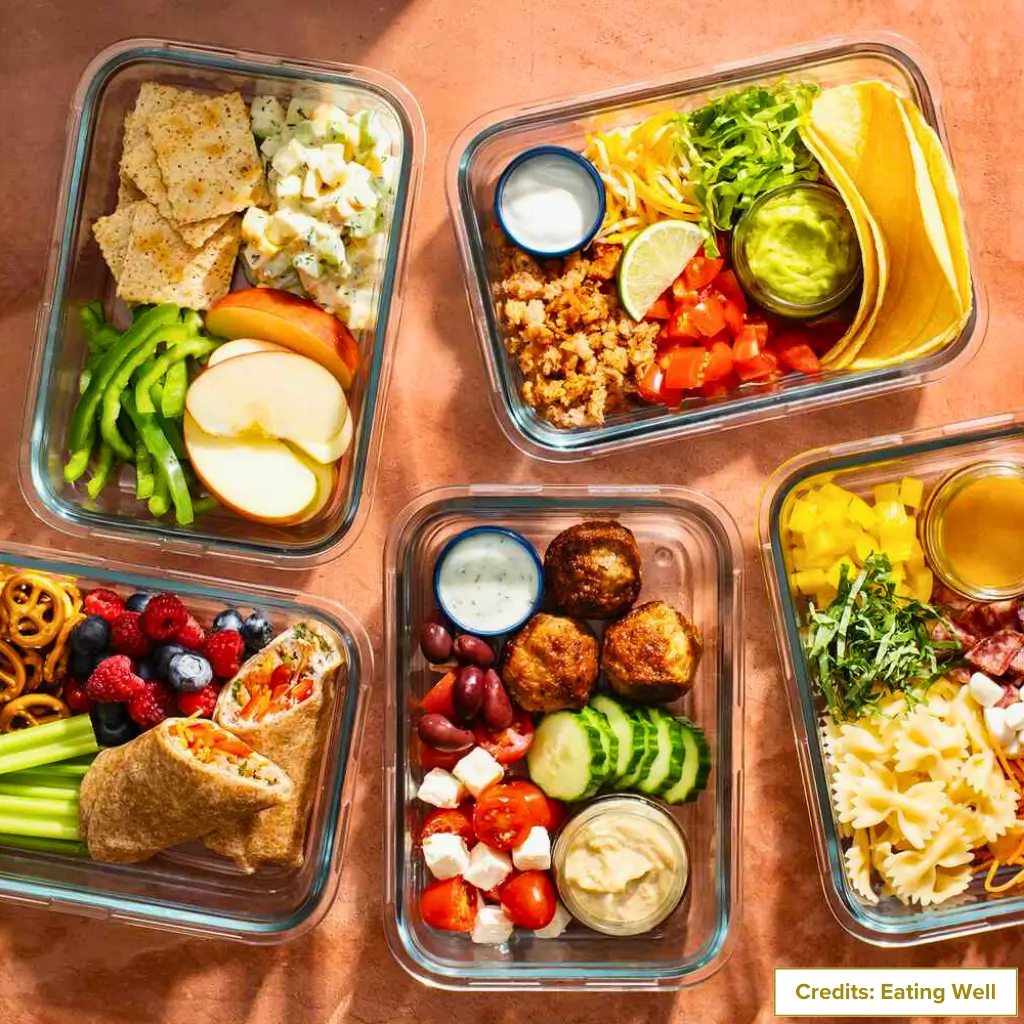
How a Healthy Diet Affects High School Students
A healthy diet does more than just fuel the body. It powers the mind and sets the stage for lifelong habits. Healthy school lunches directly impact students in profound ways. Let’s take a look at some before we wrap up:
- Boosted Cognitive Skills: Foods rich in nutrients enhance brain function, improving memory, focus, and problem-solving abilities.
- Sustained Energy: A diet balanced with proteins, whole grains, and fresh produce helps students maintain consistent energy levels throughout the day.
- Disease Prevention: Establishing good eating habits during adolescence reduces the risk of conditions like obesity, diabetes, and heart disease.
- Better Brain Power: Eating healthy helps brain work better, making it easier to remember things, stay focused, and solve problems.
- Staying Healthy: Eating well prevents students having health problems like obesity, diabetes, and heart disease later on.
- Better Mood: The right foods help balance mood which makes it easier for teachers to manage behaviours.
- Stay Focused: Eating the right foods helps keep blood sugar steady, so high schoolers stay focused and alert in class instead of feeling sluggish.
Conclusion
High school cafeterias have evolved over the years, but there’s always room for improvement. By incorporating healthier options, enhancing cafeteria design, and educating students, schools can play a pivotal role in promoting lifelong healthy eating habits.
FAQs
Are high school cafeteria meals healthy?
Many high schools now provide healthier options like salads, fruits, and whole grain products. However, the nutritional quality can vary, and it’s important to check the specific offerings at each school.
Is it safe to eat food from the high school cafeteria?
Yes, food safety standards are generally followed in school cafeterias to ensure meals are prepared and stored safely. Cafeterias must comply with local health regulations.
Why are high school lunches important?
They provide essential nutrients that support students’ physical and cognitive development.

